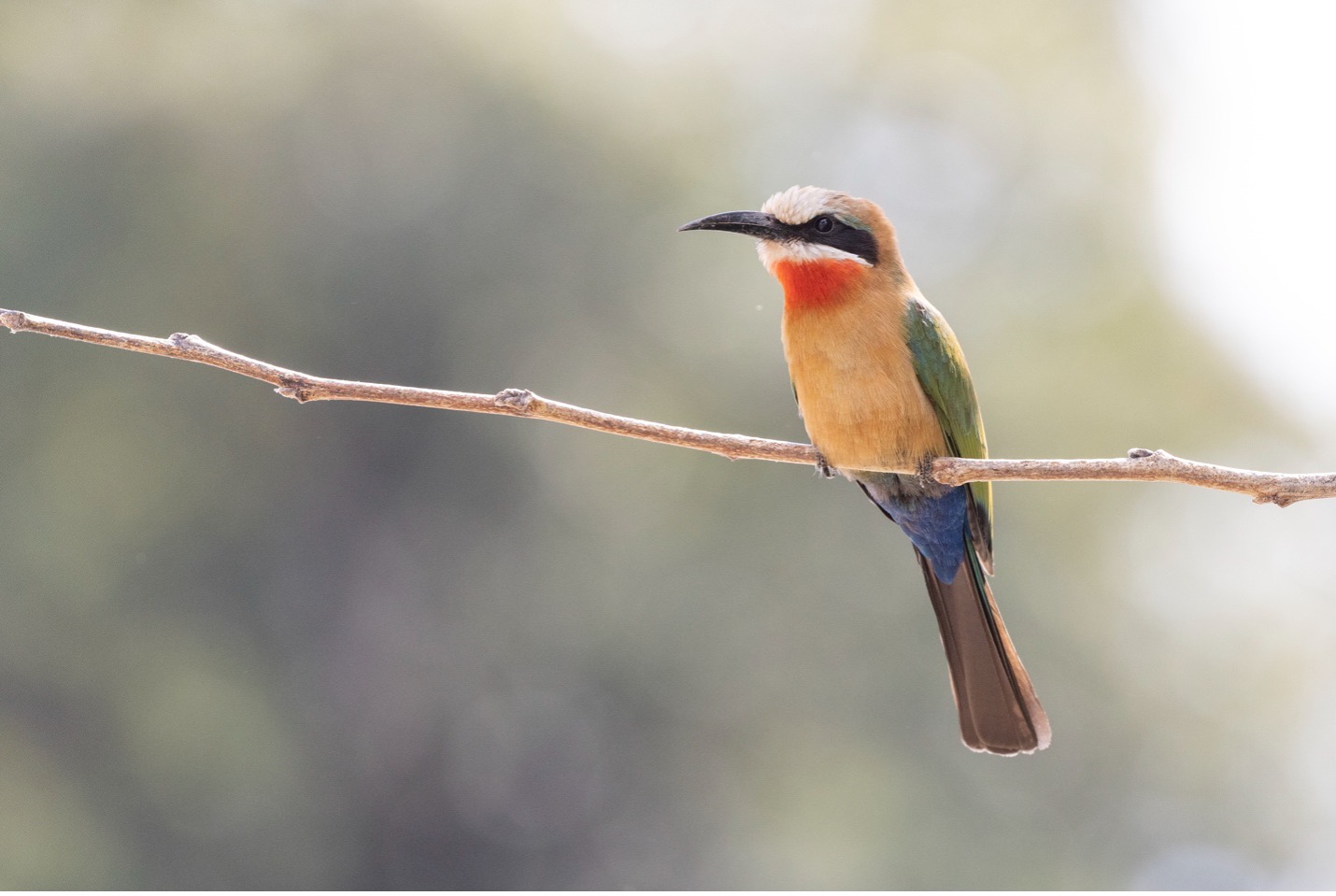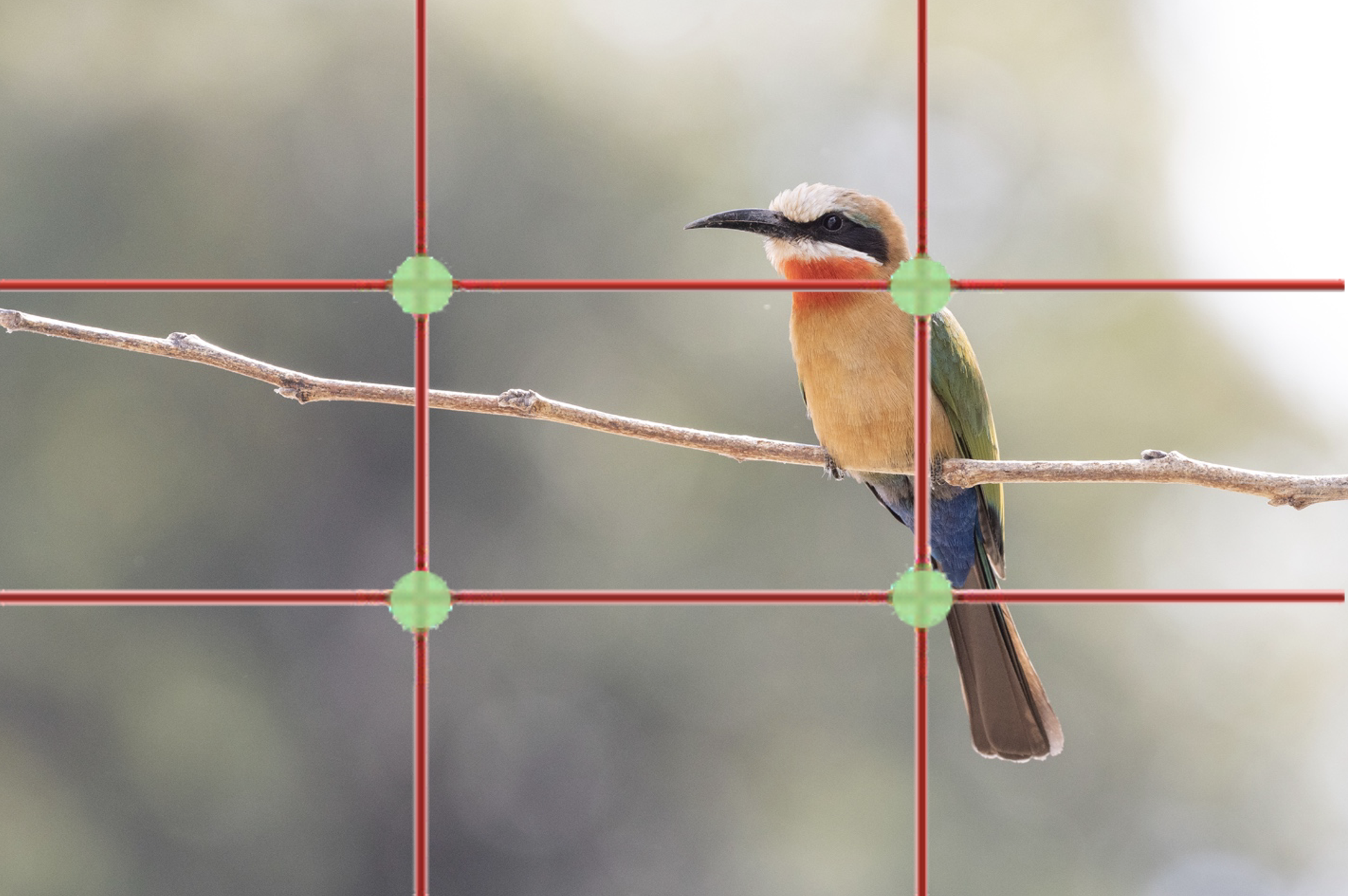
How To Get This shot – Bee-Eater in Tanzania
The birds of Africa don’t generally get the limelight in photography, as they tend to be upstaged by the larger, more well-known fauna like lions, giraffes, and elephants. However, when you take the time to really look (and photograph), they are no less charismatic and are absolutely some of the best parts of African safari photography.
In addition, because they are less photographed, your trip album and portfolio will really stand out. I always advocate for differentiating your photography, and ensuring you capture some brilliant birds in Tanzania is a fantastic way to do so.
Read on for a play-by-play on how to capture this exact shot, as well as tips and tricks that are universal for bird photography just about anywhere in the world.

Spotting and Locating
It goes without saying that the first step is to spot these little gems while you’re on safari.
Fortunately, when going with a top-class safari company that has the best guides, it becomes quite easy. Bee-eaters specifically are found throughout Tanzania as well as Africa at large. While some species are more restricted in their range, you’ll notice that they all exhibit some similar perching behaviors, which makes the above shot quite possible in many areas.
Shot Settings
Your camera settings are paramount to the success of this style of photo.
The key thing you’re likely to notice right off the bat is how the bird is largely isolated from its background, giving it a really sharp look. The fact that the background is indeed so blurred (a quality known as “bokeh”) also helps draw the viewer’s attention to this spectacular bird, making the colors and expression all the more powerful.
To get this lovely blur, you’ll want to have a very shallow depth of field. The easiest way to prioritize a shallow depth of field is to a) use as much telephoto power as possible and b) set your aperture to the lowest f/number you can. For most lenses, we’re looking at something around 400mm telephoto length and f/5.6. Your exact lens may differ, but this is a solid approximation.
When using telephoto in conjunction with the low f/number, you are dialing your camera in to give you the narrowest slice of focus, causing the background to melt away.
Composition
As you can see, the composition of this style of photo is relatively simple. It adheres quite nicely to the rule-of-thirds, and has the bird facing the open direction where there is more space.

The key to making this easy and doable is to actually zoom slightly out so that you have some leeway to crop in on the computer to align the photo to the thirds grid.
Yes, this does fly in the face of my previous suggestion to zoom in as much as possible to create a super shallow depth of field. However, just know that if you can’t quite nail the composition in-camera, a great way to make it work later is to have that extra space. I’m talking something like 20–50mm. So, for instance, if you were shooting at, say, 500mm, try going for something like 450mm or 480mm just to give a little room.
A Fast Shutter and Frame Rate
Speed is key here.
If you’ve ever spent time around bee-eaters in Tanzania or elsewhere on an African safari, you know they move fast. They do sit on branches for periods of time, but you have almost no warning for when they’re likely to take off again.
The benefit of a fast frame rate is that you can take multiple photos while they’re on the branch. Slight movements of the beak or head can make quite a difference in the resulting photo quality, so taking multiple photos is essential.
A fast shutter is important because they can be quite twitchy when sitting on the branch. It doesn’t look like they are moving much, but a slow shutter can result in a blurred photo, or at least one that isn’t as sharp as it could be.
Specifically, I recommend trying to shoot at 1/1000th of a second to abate any issues. Fortunately, these birds often perch in bright sunlight and are active in daylight conditions. Thus, 1/1000 shouldn’t be hard.
Similarly, your frame rate should be fast—I’d recommend setting it as fast as it can go on your camera. Something like 5–10 photos per second is ideal.
Leveling Up
Capturing an image of a bee-eater as it’s moving and flying can be wildly rewarding, but it’s also quite challenging. Again, these birds are extraordinarily fast, and they often fly without much warning.
Fortunately, they also exhibit a bit of patterned behavior, frequently returning to a similar perch after short bits of hunting. Thus, you can sometimes predict where they’re going to land with some precision. This is a valuable tool for capturing that split second when they are in the air.

With some creative photoshopping, you can even merge multiple photos into one, showcasing the flight path and creating a really unique photo. Again, a high frame rate is critical for nailing the look above!
As you can see, there is a lot of fun to be had with these amazing little beauties! Just make sure to stick with a fast shutter speed, a fast frame rate, and do all you can to enhance that shallow depth of field.
If you’re headed to Tanzania, or anywhere in sub-Saharan Africa, you have a very good chance to photograph any number of bee-eaters found in the region. But don’t stop there! These techniques also work well for many other birds in Africa, and as you can see, there is a lot to show off besides the obvious when it comes to a photo safari.
All the best,

Court
Leave a reply